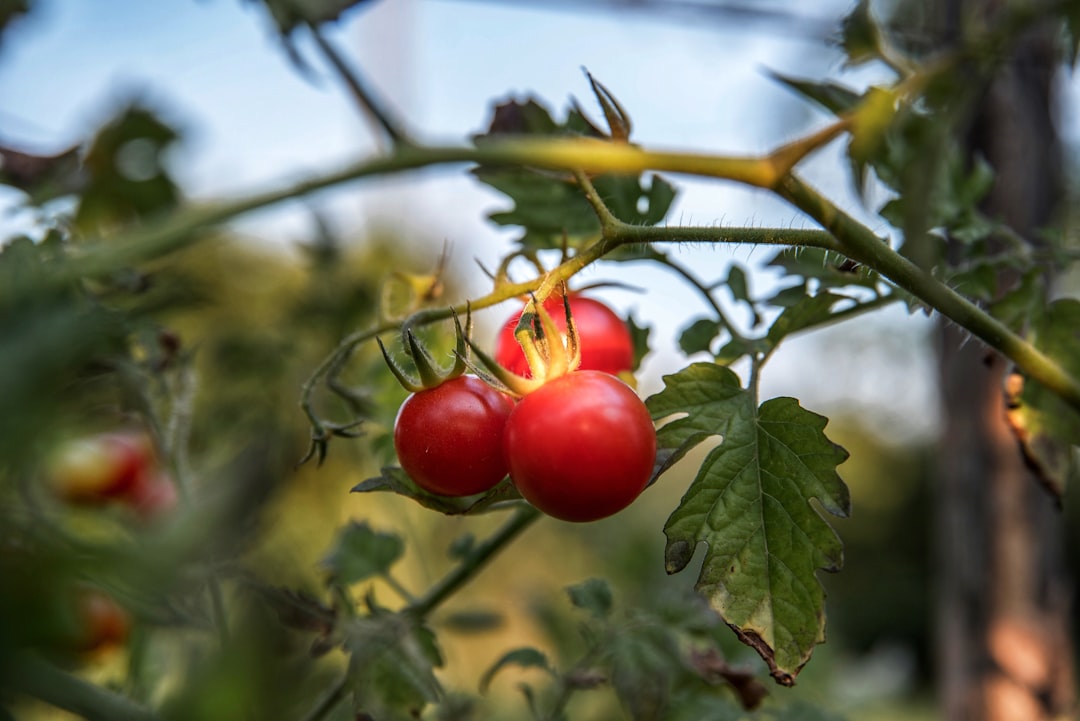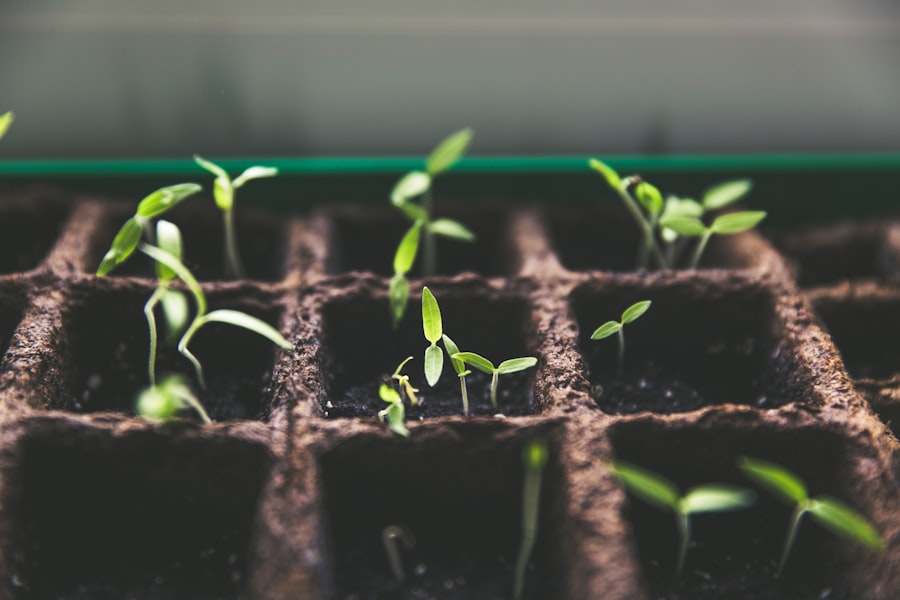Tomatoes thrive in grow bags: A beginner’s guide

Growing tomatoes in grow bags has become increasingly popular among gardeners and home growers. Grow bags offer several advantages over traditional planting methods, making them an attractive option for tomato enthusiasts. In this article, we will explore the benefits of using grow bags for tomato plants, how to choose the right grow bag, and provide tips on planting, caring for, and harvesting tomatoes in grow bags.
Key Takeaways
- Growing tomatoes in grow bags is a great option for those with limited space or poor soil quality.
- Benefits of using grow bags for tomato plants include better drainage, mobility, and increased air circulation.
- Choosing the right grow bag for your tomato plant involves considering size, material, and drainage holes.
- Preparing the grow bag for planting involves filling it with a suitable growing medium and adding support structures if necessary.
- Selecting the right tomato variety for grow bags involves choosing determinate or bush varieties that don’t require staking.
Benefits of using grow bags for tomato plants
One of the main advantages of using grow bags for tomato plants is their superior drainage and aeration. Grow bags are typically made from breathable materials such as fabric or plastic, which allows excess water to drain out easily. This prevents waterlogging and ensures that the roots have access to oxygen, promoting healthy growth.
Another benefit of using grow bags is that they can help prevent soil-borne diseases. Traditional planting methods often involve using soil from the ground, which may contain pathogens that can harm tomato plants. Grow bags provide a clean and sterile environment for the roots, reducing the risk of diseases such as fusarium wilt or root rot.
Choosing the right grow bag for your tomato plant
When it comes to choosing a grow bag for your tomato plant, there are a few factors to consider. The two main types of grow bags are fabric and plastic. Fabric grow bags are breathable and allow for better air circulation around the roots, while plastic grow bags retain moisture more effectively. The choice between fabric and plastic ultimately depends on your specific needs and growing conditions.
In terms of size, it is important to choose a grow bag that is large enough to accommodate the root system of your tomato plant. A general rule of thumb is to select a grow bag with a capacity of at least 5 gallons for determinate varieties and 10 gallons or more for indeterminate varieties. This will ensure that the roots have enough space to spread out and access nutrients.
Preparing the grow bag for planting
| Step | Description | Time Required | Tools Required |
|---|---|---|---|
| 1 | Soak the grow bag in water for 30 minutes | 30 minutes | Grow bag, water source |
| 2 | Poke holes in the bottom of the grow bag for drainage | 5 minutes | Scissors or knife |
| 3 | Fill the grow bag with potting soil | 15 minutes | Potting soil, scoop or trowel |
| 4 | Water the soil until it is moist but not saturated | 5 minutes | Watering can or hose |
| 5 | Place the grow bag in a sunny location | N/A | N/A |
Before planting your tomato seedlings in the grow bag, it is important to properly prepare the bag. Start by filling the grow bag with a high-quality potting mix or a mixture of compost and garden soil. Make sure to leave a few inches of space at the top to allow for watering.
To provide your tomato plants with the necessary nutrients, it is recommended to add fertilizer and other amendments to the soil. This can include organic matter such as compost or well-rotted manure, as well as slow-release fertilizers. Mix these amendments into the soil thoroughly before planting.
Selecting the right tomato variety for grow bags
Not all tomato varieties are suitable for growing in containers or grow bags. When selecting a tomato variety for your grow bag, it is important to choose one that is compact and well-suited for container gardening. Determinate varieties, which grow to a predetermined height and produce fruit all at once, are generally better suited for grow bags than indeterminate varieties, which continue to grow and produce fruit throughout the season.
Additionally, consider your climate and growing conditions when choosing a tomato variety. Some varieties are more tolerant of heat or cold, while others may be more resistant to common diseases. Research different varieties and choose one that is best suited for your specific needs.
Planting and caring for tomato plants in grow bags

To plant tomato seedlings in grow bags, start by making a small hole in the soil and gently placing the seedling into it. Fill in the hole with soil and press it down gently to secure the plant. Make sure to leave enough space between each plant to allow for proper air circulation.
Caring for tomato plants in grow bags involves regular watering and fertilizing. Tomatoes require consistent moisture, so it is important to water them regularly, especially during hot weather. However, be careful not to overwater as this can lead to root rot. Fertilize the plants every few weeks with a balanced fertilizer to provide them with the necessary nutrients for healthy growth.
Watering and fertilizing tomato plants in grow bags
Proper watering and fertilization are crucial for the success of tomato plants in grow bags. As mentioned earlier, tomatoes require consistent moisture, so it is important to water them regularly. However, it is equally important to ensure that the grow bag has good drainage to prevent waterlogging. Monitor the moisture level of the soil and adjust your watering schedule accordingly.
Fertilizing tomato plants in grow bags is also important to provide them with the necessary nutrients. Use a balanced fertilizer that contains equal amounts of nitrogen, phosphorus, and potassium. Apply the fertilizer according to the instructions on the package, usually every few weeks during the growing season.
Pruning and training tomato plants in grow bags
Pruning and training tomato plants in grow bags is essential for maximizing yield and preventing disease. Pruning involves removing suckers, which are small shoots that grow in the leaf axils of tomato plants. By removing these suckers, you can direct the plant’s energy towards fruit production rather than excessive foliage.
Training tomato plants involves supporting them as they grow. This can be done by using stakes or cages to keep the plants upright and prevent them from sprawling on the ground. Regularly check the plants and adjust the supports as needed to ensure proper growth and stability.
Common problems and solutions when growing tomatoes in grow bags
While growing tomatoes in grow bags can be rewarding, there are some common problems that may arise. Pests such as aphids or whiteflies can infest tomato plants, causing damage to the leaves and fruit. To control these pests, use organic insecticides or introduce beneficial insects such as ladybugs or lacewings.
Diseases such as blight or powdery mildew can also affect tomato plants. To prevent these diseases, ensure proper air circulation around the plants and avoid overhead watering. If necessary, apply fungicides according to the instructions on the package.
Harvesting and enjoying your homegrown tomatoes from grow bags
The moment you’ve been waiting for has arrived – it’s time to harvest your homegrown tomatoes! Tomatoes are typically ready to harvest when they are fully colored and slightly soft to the touch. Gently twist or cut the fruit from the plant, being careful not to damage the stem or surrounding foliage.
Once you’ve harvested your tomatoes, there are countless ways to enjoy them. From fresh salads and sandwiches to homemade pasta sauces and salsas, the possibilities are endless. Experiment with different recipes and savor the delicious flavors of your homegrown tomatoes.
Growing tomatoes in grow bags offers several advantages over traditional planting methods. The superior drainage and aeration provided by grow bags promote healthy root growth and help prevent soil-borne diseases. By choosing the right grow bag, preparing it properly, selecting the right tomato variety, and providing proper care, you can enjoy a bountiful harvest of homegrown tomatoes. So why not give it a try? Start growing tomatoes in grow bags and experience the joy of harvesting your own delicious tomatoes.
If you’re interested in growing tomatoes in a grow bag, you might also want to check out this informative article on Lawn World’s website. They have a comprehensive sitemap that includes a variety of gardening topics, including tips and tricks for successful tomato cultivation. To learn more about maximizing your tomato harvest using grow bags, click here: https://www.lawnworld.com/growing-tomatoes-in-grow-bags.html. Happy gardening!
FAQs
What is a grow bag?
A grow bag is a container made of fabric or plastic that is used for growing plants. It is designed to provide a suitable environment for plants to grow, including proper drainage and aeration.
Can tomatoes be grown in a grow bag?
Yes, tomatoes can be grown in a grow bag. In fact, grow bags are a popular option for growing tomatoes as they provide good drainage and aeration, which are important for healthy tomato plants.
What type of soil should be used in a grow bag for tomatoes?
A good quality potting mix or soilless mix is recommended for growing tomatoes in a grow bag. The mix should be well-draining and rich in nutrients to support healthy plant growth.
How often should tomatoes in a grow bag be watered?
Tomatoes in a grow bag should be watered regularly, typically once a day or more often in hot, dry weather. It is important to keep the soil moist but not waterlogged, as this can lead to root rot.
What type of fertilizer should be used for tomatoes in a grow bag?
A balanced fertilizer with equal amounts of nitrogen, phosphorus, and potassium is recommended for tomatoes in a grow bag. Fertilizer should be applied according to the manufacturer’s instructions, typically every 2-3 weeks.
How much sunlight do tomatoes in a grow bag need?
Tomatoes in a grow bag need at least 6-8 hours of direct sunlight per day to grow and produce fruit. If the grow bag is located in a shady area, supplemental lighting may be necessary.
How do you support tomato plants in a grow bag?
Tomato plants in a grow bag should be supported with stakes or cages to prevent them from falling over as they grow. Stakes should be inserted into the soil near the base of the plant and tied to the stem with soft twine. Cages should be placed around the plant and secured to the grow bag.



